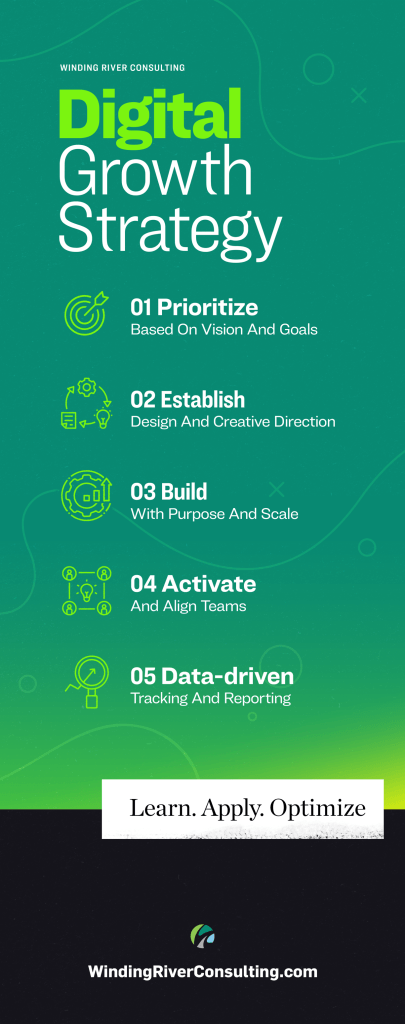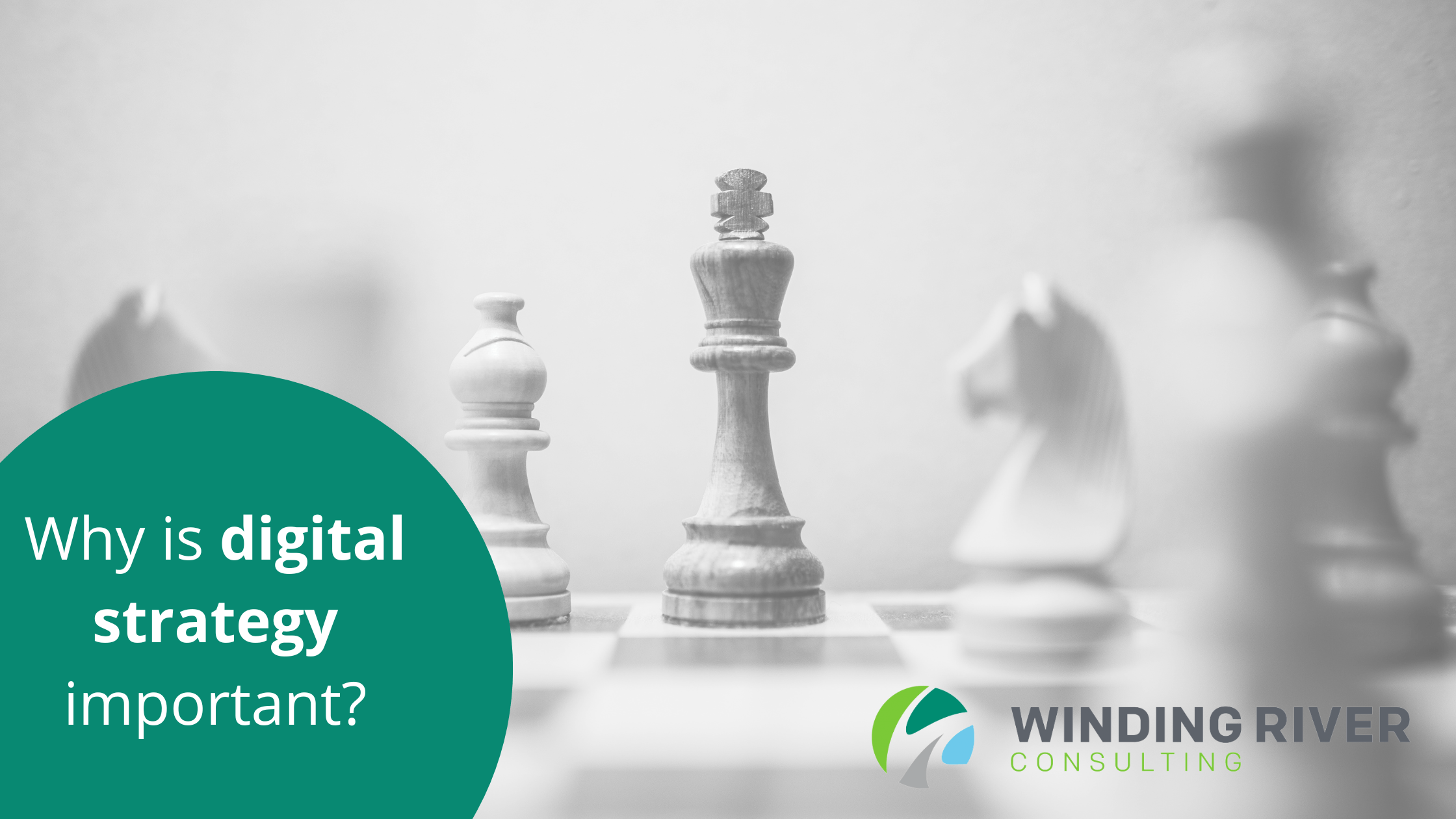2 min read
Why is Digital Strategy Important?
(Page Updated on August 14, 2023) There is no shortage of buzz around the idea of a digital strategy in 2023. Firms are being encouraged on all...

David empowers firms to grow strategically by aligning innovation, insight, and execution. He leads WRC’s signature programs and advises firm leaders on M&A, digital growth, and leadership development.
Table of Contents
If you are a managing partner or a marketing professional at an accounting firm, you most likely already engage in some form of digital marketing. It’s easy to think that “doing” digital marketing is the same as having a digital growth strategy. And some might think having a social presence, an updated website, and occasional emails to clients and prospects with a monthly newsletter is all you need. Most firm leaders impacting business development and marketing don’t have established key performance indicators or even track metrics to understand what is working and how to repeat success or learn from our failures.
Here’s what you need to know about digital marketing that we see most firms getting wrong :
The strategy that supports digital marketing efforts encompasses far more than your website copy, LinkedIn posts, and online networking. If you’re feeling generally uncertain or disappointed with the results you see from digital marketing efforts, here’s why: You don’t have a digital strategy.
Read on to learn more:
On any given day, you may hear noise about types of digital strategies. Selecting a strategy is simply about understanding your priorities and goals.
Digital strategies are not the same as digital marketing strategies. Tactics like inbound, demand generation and lead nurturing are great – and essential – but we are talking here at a higher level. For instance, a go to market strategy will include digital, processes and models:
Most firms will have a custom digital strategy that is informed by one or more of these, and the goal of honing in on this is to attract new clients and increase revenues or profits.
Achieve implementation by building strategy steps. Here is an example of the steps you may take to execute on a strategy:

These are sequential. The single biggest mistake firms make in any strategy is that they jump straight to the doing, because they want immediate results. Think of a digital strategy like you would a game of dominos: yank one out and you’re at a standstill. If you don’t start with the strategy, and you don’t start at all.
Most managing partners want the benefit of instant results without understanding that the process in its entirety is required to achieve them. Instead, they push for a premature outcome that presents a false narrative of what the data means. They must first understand that the process that is put in place must be adhered to in order to derive timely and accurate results.
The Marketing Strategy Compass was created and popularized by Forrester. Picture digital strategy as a compass. You can easily identify degrees on the compass, which navigate you in the right direction. Strategy is the magnetic pull. Every effort, if only a degree or two off, can misdirect the path to your destination. A comprehensive digital strategy will keep everyone aligned toward reaching the same goals.
The process that follows the approved strategy needs to be implemented in its proper order. This step-by-step method ensures that a firm remains on a trajectory to the desired outcome. The marketing team implements the plan through every phase, then uses data to confirm that the plan is on target. Should an event distract the plan or cause the firm to veer from it, returning to the digital strategy will ensure the ability to resume the direction toward success. All of the processes that come after the establishment of a digital strategy (design, build, team, measuring, improvements) are driven by digital strategy.
Process orientation can be critical to rollout. According to CHRON.com, “Functional orientations are organized along functions, like production, marketing and sales. Process orientations let staff interact between these business functions, or across organizational lines.” In the case of a digital strategy, employing a functional strategy, whereby marketing oversees the implementation of the strategy, monitors, redirects, and reports is a logical appointment. Expect endless course-corrections. Having a plan in place and the team executing it identified means never having to start from zero.
McKinsey conducted a survey that identified four ways in which companies with the best economic performance are leverage digital strategies:
If you need help with a digital growth strategy, Winding River Consulting is here. It’s what we do. Contact us to learn more.

2 min read
(Page Updated on August 14, 2023) There is no shortage of buzz around the idea of a digital strategy in 2023. Firms are being encouraged on all...

5 min read
Every firm is at a different stage on the digital growth journey. Regardless of where they are, every firm needs a strategy. You may be novice in...

5 min read
The digital landscape for accounting firms has fundamentally shifted. Every firm knows it needs a comprehensive digital transformation strategy—one...